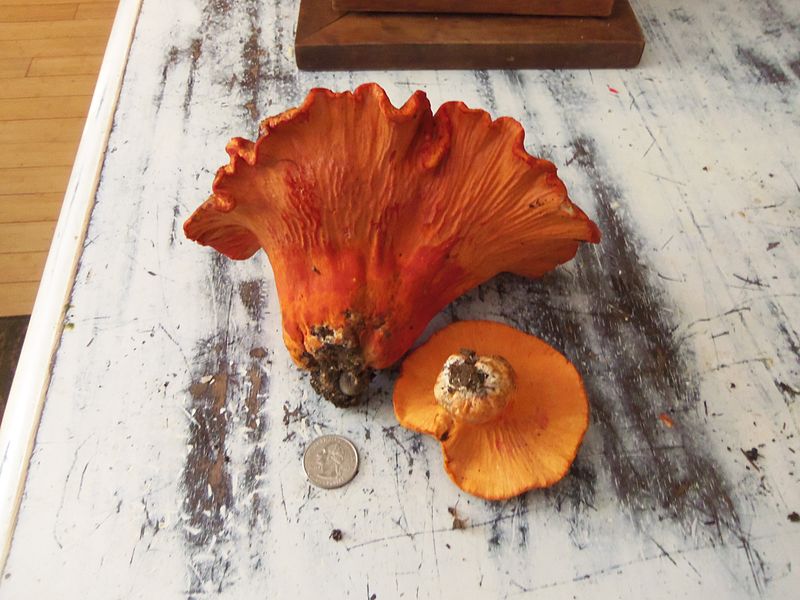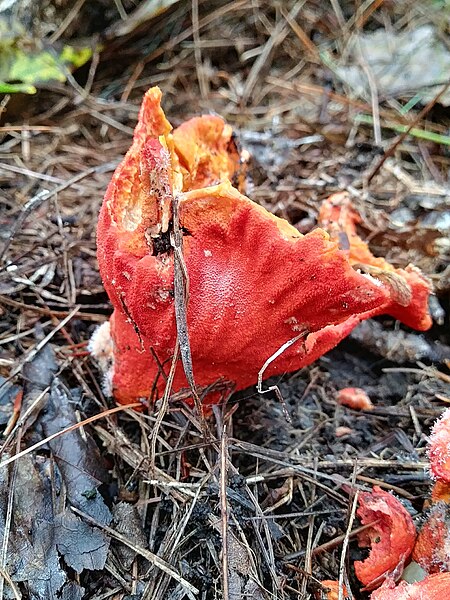Lobster Mushroom Identification – Hypomyces lactifluorum
Heads up
When thinking of mushrooms, the image that often comes to mind is a brown or white cap with a slender stem growing amidst fallen leaves. However, there’s a certain type of mushroom that stands out both in color and texture, called the Lobster Mushroom or Hypomyces lactifluorum.
Lobster Mushroom: Key Parts in Photos


How to identify Lobster Mushroom
The Lobster Mushroom isn’t a mushroom in the typical sense. It begins its life when a fungus, known as Hypomyces lactifluorum, invades another mushroom. The usual victims are white mushrooms from the Russula or Lactarius families. Once the invasion starts, the Hypomyces fungus spreads a bright orange layer on its host, completely changing its appearance and structure. This new form has a hard surface peppered with small pimples. As this transformation progresses, the host mushroom can twist and turn, losing its original shape.
The vivid bright orange hue is the primary characteristic of the Lobster Mushroom. As it matures, this coating can sometimes shift to a purplish-red. Unlike most mushrooms that have gills underneath their caps, the Lobster Mushroom’s gills transform into low blunt ridges. If you were to inspect the mushroom’s surface closely, possibly with a hand lens, you’d see tiny flask-shaped fruiting structures of the Hypomyces fungus. These are reddish-orange and dot the mushroom’s surface. The flesh inside remains white and brittle, reminiscent of its original form.
For those who appreciate the finer details, the Lobster Mushroom has more to offer. Under a microscope, the spores of this mushroom measure between 30-50 µm in length and are spindle-shaped. The Lobster Mushroom doesn’t have a distinctive smell when it’s fresh, but if you pick one up and it smells fishy, it’s best to leave it be. That’s a sign of age, and it’s not advisable to eat.
Want to learn more?

Disclosure: This post includes affiliate links. If you make a purchase through these links, we may earn a commission at no extra cost to you. We appreciate your support, as it helps keep this website running. Alternatively, you can search for the book title on Amazon if you prefer not to use the links. Thank you for your understanding and support!
